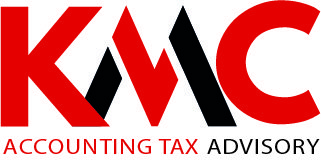Impact of the New Policy on Business Households upon the Abolition of Fixed-Sum Tax
by KMC Consulting Company Limited
1. Context of Policy Adjustment and Reform Objectives
On October 6, 2025, the Ministry of Finance issued Decision No. 3389/QD-BTC approving the Project on “Transformation of the Tax Management Model and Method for Business Households upon the Abolition of Fixed-Sum Tax.” This marks a pivotal shift in tax administration for the business household sector – a group that plays an important role in the economy but has long faced limitations in financial transparency and bookkeeping management.
The new policy aims to achieve the following objectives:
- Completely abolish the fixed-sum tax mechanism, which is predetermined and does not accurately reflect actual business performance.
- Transition to a self-declaration and self-payment model in line with international practices.
- Promote digital transformation, including the application of electronic invoices and digital documents.
- Establish a level playing field between business households and enterprises.
- _Reduce long-term compliance costs and enhance voluntary tax compliance.
According to the roadmap, from January 1, 2026, all business households currently subject to fixed-sum tax will be required to transition to the declaration-based model as guided by the Project.
2. Business Household Groups Mainly Affected: Annual Revenue from VND 200 Million to VND 3 Billion
This group represents a significant proportion of business households and will be most affected by the abolition of the fixed-sum tax.
2.1. Tax Calculation Method
Value-Added Tax (VAT) (Direct Method on Revenue):
VAT Payable = Taxable Revenue × VAT Rate (%)
Personal Income Tax (PIT) (Calculated as a Percentage of Revenue):
PIT Payable = Taxable Revenue × PIT Rate (%)
Taxable revenue includes:
- Revenue inclusive of tax;
- Sales of goods and services;
- Bonuses, sales incentives, discounts, and other benefits received by the business household.
2.2. Tax Rates by Industry
The revenue-based tax rates (tax table) are detailed in Appendix I issued together with Circular No. 40/2021/TT-BTC and the latest compilations. The currently applied basic rates are as follows:
|
No. |
Industry Category |
VAT Rate (%) |
PIT Rate (%) |
|---|---|---|---|
|
1 |
Distribution and supply of goods |
1% |
0,5% |
|
2 |
Services, construction without procurement of materials |
5% |
2-5% |
|
3 |
Manufacturing, transportation, services associated with goods; construction with procurement of materials |
3% |
1,5% |
|
4 |
Other business activities |
2% |
1% |
Thus, instead of a predetermined fixed-sum tax, business households are required to record actual revenue generated and pay the corresponding taxes. This ensures more transparent business operations and reduces the risk of incorrect tax assessment.
3. Business Households with Annual Revenue over VND 3 Billion: Almost “Mini-Enterprises”
This group consists of large-scale business households that are required to transition to a tax mechanism similar to that of enterprises.
3.1. VAT under the
Credit Method
VAT Payable = Output VAT – Deductible Input VAT
Requirements include:
- Issuance of full VAT invoices;
- Collection and storage of valid input invoices;
- Establishment of a more formal and complete accounting system.
3.2. Personal Income Tax Calculated on Taxable Income
No longer calculated as a percentage of revenue.
Taxable Income = Revenue – Deductible Expenses
PIT Payable = Taxable Income × 17%
This creates equality between large-scale business households and small enterprises, while also requiring business households to maintain a valid expense documentation system.
4. Policy Impacts on Business Households
4.1. Positive Impacts
- Enhancing business transparency:
Tax calculation based on actual revenue will help minimize predetermined taxation, limit negative practices in tax administration, and prevent incorrect tax assessment, ensuring that the tax payable reflects actual business performance. - Promoting digital transformation:
Mandatory use of electronic invoices and online tax declaration and payment will reduce direct interactions with tax authorities, save time and transaction costs, and gradually standardize the financial management practices of business households. - Improving access to credit:
Maintaining proper bookkeeping and storing full invoices and supporting documents increases income transparency, thereby facilitating access to bank loans or other credit institutions. - Facilitating participation in official supply chains:
Issuing full invoices and supporting documents allows business households to meet the requirements of partners such as supermarkets, e-commerce platforms, and supply chains, thereby expanding collaboration opportunities and enhancing competitiveness. - Laying the foundation for business transformation:
For large-scale business households, systematized bookkeeping and standardized procedures provide a favorable basis for transitioning into enterprise form, enabling better exploitation of scale, market, and legal advantages.
4.2. Challenges
- Requirement to record full and accurate revenue:
Business households must change the habit of selling without invoices and implement transparent revenue management, which requires adaptation time and strict compliance. - Increased compliance costs:
The application of electronic invoices, purchase of sales software, accounting software, and data storage equipment may raise operating costs, especially for small-scale households. - Risk of errors in declaration and bookkeeping:
Many business households lack formal accounting and tax knowledge, making them prone to errors in tax declaration, expense recording, or document preparation, which may result in penalties or tax adjustments. - Pressure on financial and accounting management:
Large-scale business households must build a management system similar to enterprises, including tracking revenue, expenses, allocating supporting documents, and storing invoices. This requires higher managerial capacity and investment in personnel or accounting services.
For more detailed information about this or related Tax Advisory, please don't hesitate to contact us.
Website: https://kmc.vn/
Hotline: +84 81 489 4789 or +84 91 988 9331
Email: info@kmc.vn

